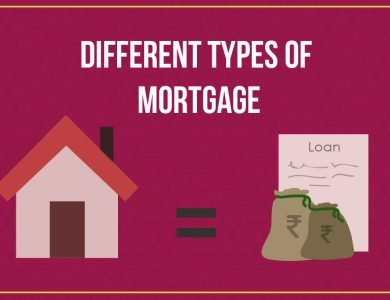Mortgage Loans for Your New Home: A Comprehensive Overview

The dream of owning a home is a significant milestone in many people’s lives. However, purchasing a home often requires financial assistance, and that’s where mortgage loans come into play. Mortgage loans provide individuals and families with the means to finance their new homes while spreading the cost over an extended period. In this comprehensive overview, we will delve into the world of mortgage loans, exploring the key concepts, types of loans, application process, and considerations to help you make informed decisions as you embark on your journey to homeownership.
Understanding Mortgage Loans: The Basics
A mortgage loan is a financial agreement between a borrower and a lender, typically a bank or mortgage company. The borrower receives a sum of money to purchase a home, and in return, the lender places a lien on the property as collateral. The borrower repays the loan over a specified period, typically 15 to 30 years, through monthly mortgage payments that include both principal and interest.
Types of Mortgage Loans
- Fixed-Rate Mortgage: In a fixed-rate mortgage, the interest rate remains constant throughout the loan term. This provides predictability and stability in monthly payments, making it a popular choice for homeowners.
- Adjustable-Rate Mortgage (ARM): An ARM offers an initial fixed interest rate for a specific period, after which the rate adjusts periodically based on market conditions. This type of loan can result in lower initial payments but carries the risk of rate fluctuations.
- FHA Loan: Insured by the Federal Housing Administration, an FHA loan is designed to assist first-time homebuyers and individuals with lower credit scores. It offers lower down payment requirements and more lenient credit criteria.
- VA Loan: Available to eligible veterans, active-duty service members, and certain members of the National Guard and Reserves, a VA loan is backed by the U.S. Department of Veterans Affairs and offers favorable terms.
- USDA Loan: The U.S. Department of Agriculture offers USDA loans to individuals in eligible rural and suburban areas. These loans often have low or no down payment requirements.
The Mortgage Loan Application Process
- Prequalification: This initial step involves providing basic financial information to the lender, who then estimates the loan amount you may qualify for based on your income, debts, and credit score.
- Preapproval: Preapproval involves a more thorough evaluation of your financial situation. Lenders typically request documentation to verify your income, credit history, and other financial details.
- Choosing a Loan: Based on your financial circumstances and preferences, you can select the type of mortgage loan that best suits your needs.
- Loan Application: Complete a loan application, providing comprehensive information about yourself, the property, and your financial history.
- Underwriting: The lender reviews your application, assesses your creditworthiness, and evaluates the property’s value to determine if you qualify for the loan.
- Loan Approval: Once your application is approved, you’ll receive a loan commitment letter outlining the terms and conditions of the loan.
- Closing: During the closing process, you’ll sign the necessary paperwork, pay closing costs, and the property’s ownership will be transferred to you.
Considerations When Obtaining a Mortgage Loan
- Down Payment: The amount you put down as a down payment affects the loan amount and monthly payments. A larger down payment often leads to better loan terms.
- Interest Rates: The interest rate you secure has a significant impact on your monthly payments and the total cost of the loan.
- Loan Term: Choosing the loan term (15, 20, or 30 years) affects the monthly payments and overall cost of the loan.
- Closing Costs: Be prepared for closing costs, which include fees for appraisals, title insurance, and other services.
- Credit Score: A higher credit score often leads to better interest rates and loan terms.
- Debt-to-Income Ratio: Lenders assess your debt-to-income ratio to determine your ability to manage mortgage payments.
Benefits of Mortgage Loans
- Homeownership: Mortgage loans make homeownership achievable by allowing you to spread the cost over time.
- Equity Building: As you make mortgage payments, you build equity in your home, which can be valuable in the future.
- Tax Benefits: Mortgage interest payments may be tax-deductible, providing potential tax advantages.
- Stability: Fixed-rate mortgages offer stable, predictable payments over the loan term.
Conclusion
Mortgage loans are a vital tool that empowers individuals and families to achieve their dreams of homeownership. By understanding the types of loans available, the application process, and the key considerations, you can make well-informed decisions that align with your financial goals and preferences. Remember that a mortgage loan is a significant commitment, and taking the time to research, plan, and choose the right loan type and terms can set the foundation for a successful and fulfilling homeownership journey.



